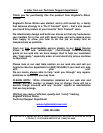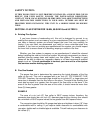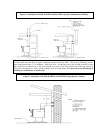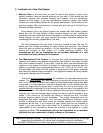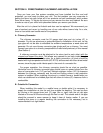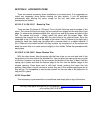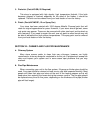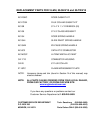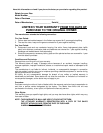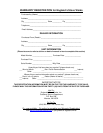
B. Draft Control
This unit has a slide draft control located under the ash apron, which is used to
regulate the amount of combustion air entering the firebox. This controls the amount
of heat your stove produces, as well as the burn time. The more you open the draft
by pulling out the handle, the more combustion air enters the firebox; this will cause
the stove to burn hotter and faster. You will have to experiment with your unit for the
most efficient setting, as no two systems are the same. If you have any problems
regulating the unit please contact your local dealer or call the factory.
C. Do Not Over-Fire Your Unit
Burning flammable liquids, too much wood and trash in the stove can result in
over-firing. If the chimney pipe turns red or even worse, white, the unit has been
over-fired. This condition may ignite creosote in the chimney and possibly cause a
house fire. If this does happen, immediately close the slide damper by pushing it in
completely and also close the by-pass damper. Get out of the house and call the fire
department. A chimney fire may cause structural damage to the chimney system,
therefore do not use the stove again until the flue system is inspected and, if
necessary, repaired or replaced. A chimney sweep can perform this inspection.
D. Everyday Fueling
Always open or pull out the by-pass damper before opening the door of the stove.
The door should be cracked for five to ten minutes to allow the excess smoke to
clear through your flue system. Never open the door with the by-pass damper
closed.
This stove is designed to burn six to eight hours on one load of seasoned
firewood. Once you have opened the door properly, you should have a bed of hot
coals in the bottom of the firebox. With the use of a poker, pull the bed of hot ashes
towards the door or front of the unit. Now you can fill the stove with seasoned wood,
close the door and allow the unit to burn freely for approximately thirty (30) minutes.
The final step is to close the by-pass damper and set your draft control to your
desired burn. Follow this procedure each time you fuel your stove.
E. Ash Removal and Disposal
Regularly inspect the ash build-up in your stove and remove as necessary.
Ashes should be placed in a metal container with an airtight lid. Pending final
disposal, the ashes should be placed on a non-combustible surface, completely
away from all combustible materials. The ashes should be retained in the closed
container until all cinders have thoroughly cooled. If you have a masonry chimney or
a pre-manufactured chimney system, it is essential that your flue be checked for
creosote build-up at least twice per month.



